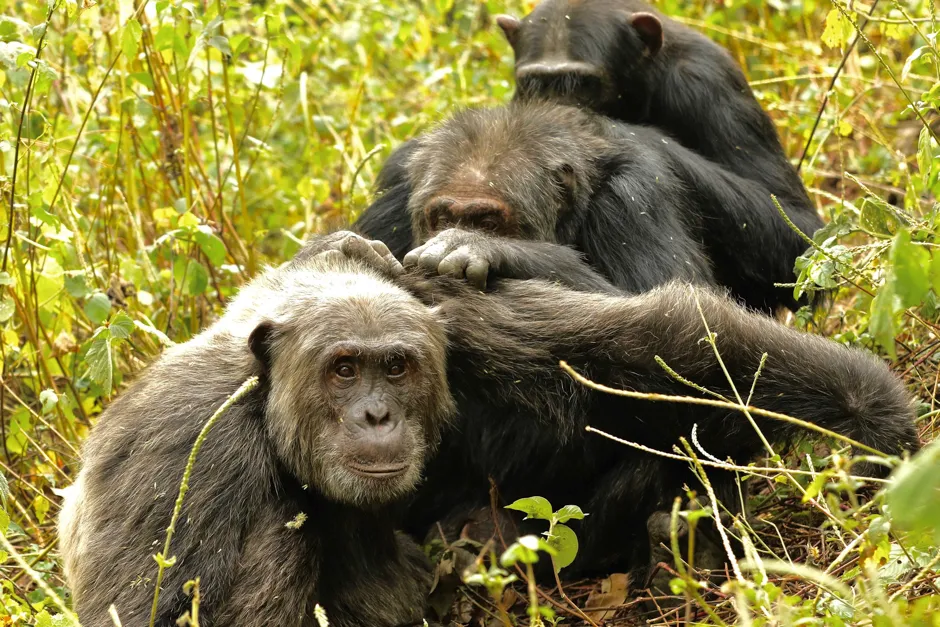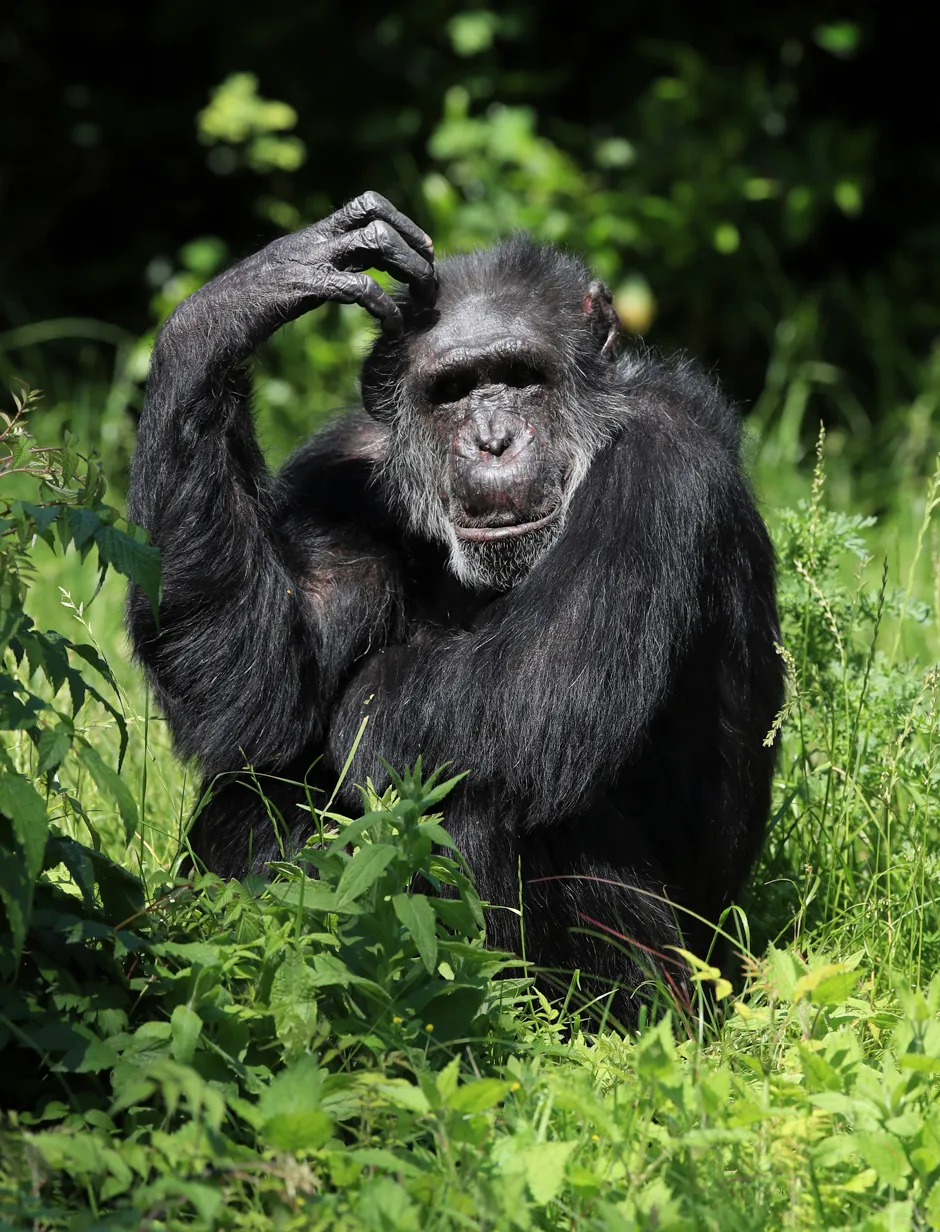Like humans, wild chimpanzees focus on fewer but more meaningful friendships as they grow older, research suggests.
Drawing on 78,000 hours of observations made between 1995 and 2016, researchers say their study provides the first evidence that non-humans also exhibit age-related social selectivity.
Researchers from the Harvard department of human evolutionary biology looked only at male chimpanzees as they show stronger social bonds and have more frequent social interactions than female chimps. The 21 chimpanzees were between the ages of 15 and 58 years old and lived in the Kibale National Park in Uganda.
Read more about primate behaviour:
- Gorillas: The bigger the groups, the weaker the friendships
- Female chimps more likely to stay at home if they have a powerful mum
- Realistic animations can help to beat the ‘Uncanny Valley’ effect in monkeys
They found that the animals displayed much of the same behaviour ageing humans exhibit.
The older chimpanzees preferred spending more time with – and grooming – chimps they had developed mutual friendships with over the years. Younger animals had more one-sided relationships where grooming wasn’t always returned.
Older males were also more likely to spend more time alone but interacted with more important social partners like their ageing mutual friends.

According to the study published in the Science journal, like older humans looking for some peace and quiet, the chimpanzees also showed a shift from negative interactions to more positive ones as they reached their twilight years.
“The really cool thing is that we found that chimpanzees are showing these patterns that mirror those of humans,” said Alexandra Rosati, an assistant professor of psychology and anthropology at the University of Michigan and one of the paper’s lead authors.
“There’s really a pressing need to understand the biology of ageing,” added Rosati.“More humans are living longer than in the past, which can change the dynamics of ageing.”
Read more about friendships:
- Survival of the friendliest: Why kindness, not aggression, helped humans thrive
- Flamingos make long-lasting friendships, same-sex bonds and ‘married’ couplings
- What nature can teach us about friendship in the time of coronavirus
The research tested the origins of humans prioritising close, positive relationships as they age and if it is really triggered by a theory known as socioemotional selectivity.
It suggests the central process driving social selectivity as people age results from them becoming aware their time is running out and wanting to make the best of that.
But the researchers say their findings suggest there is more to understand.
“Even though chimps are very smart, they do not understand they’re going to die,” explains Richard Wrangham, professor of biological anthropology and founder and co-director of the Kibale Chimpanzee Project.
“Much more likely something else is going on in chimps to explain why their relationships become more positive as they get older. And then the question is, is what applies to chimps the same as what applies to humans?”

The study also found that older chimpanzees preferred sitting close to those who preferred sitting close to them. These are categorised as mutual friendships, while one-sided friendships are when one animal prefers sitting close to another, but the other doesn’t share that habit.
Researchers found that 15-year-old chimpanzees had on average 2.1 one-sided friendships and 0.9 mutual friends. The 40-year-olds almost did not bother with one-sided friendships but did have plenty of mutual friends, an average of three.
“It raises the possibility that we are seeing behavioural systems that have been shared evolutionarily back to our common ancestor around seven or eight million years ago,” said Wranham.
Reader Q&A: How can chimps share 98 per cent of our DNA and be so different?
Asked by:Ananda Singh, Southampton
I actually find it surprising that the difference is as much as two per cent, given how similar we are. Humans and chimps are roughly the same size, have the same number of arms, legs, fingers and toes. We are both warm-blooded, we have binocular, colour vision and hairy bodies. We suckle our young, laugh, fight with our fists and tickle each other. We are composed of the same kinds of cells, with the same membranes and mitochondria and ribosomes. We convert glucose from food and oxygen from the air into energy and exhale carbon dioxide.
Because all life on Earth is descended from a single common ancestor, much of the very basic cellular machinery is common to all living things – particularly among multicellular organisms. We share 85 per cent of our DNA with a zebrafish and 36 per cent with a fruit fly. Chimps and humans diverged from a common ancestor only around six million years ago. This is only about 0.13 per cent of the total history of life on Earth.
Chimps look so different from us, mostly because we are very good at spotting differences between things that are quite similar to us. Most people can’t distinguish a cod from a haddock, yet we have no difficulty telling an Ethiopian and an Inuit apart, despite them differing by less than 0.25 per cent of their DNA.
Read more:
